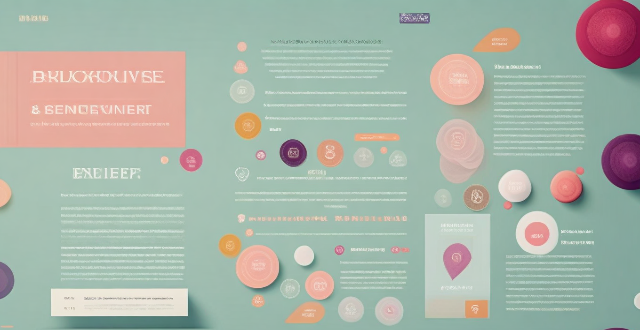The text discusses the potential relationship between physical activity and creativity, highlighting various studies and theories that support this link. It suggests that regular physical exercise can enhance creativity by improving blood flow to the brain, promoting a relaxed mental state, and providing necessary breaks from mentally demanding tasks. The text also explores practical implications for individuals and organizations, suggesting strategies such as integrating movement into daily routines and designing active workspaces to boost creative thinking. Overall, while more research is needed to fully understand the relationship between physical activity and creativity, the text encourages incorporating physical activities into daily practices to potentially enhance imaginative thinking and innovation.

While the connection between physical activity and creativity is often discussed, the exact nature of this relationship remains a topic of interest. This exploration delves into the potential links between engaging in physical activities and experiencing enhanced creative thinking.
Is Physical Activity Linked to Creativity?
Empirical Evidence
- Studies suggest that regular physical activity can boost creativity levels .
- A correlation has been observed between physical exercise and innovative thinking processes .
- Research indicates that even short bursts of physical activity can stimulate creative thinking .
Theoretical Explanations
- One theory posits that physical activity promotes better blood flow to the brain, which may enhance cognitive functions including creativity .
- Another perspective is that physical movement facilitates a more relaxed mental state, allowing for increased imaginative thinking .
- It’s also believed that physical activity provides a much-needed break from mentally demanding tasks, which can refresh the mind and inspire new ideas .
Potential Mechanisms
- Enhanced blood circulation could potentially deliver more oxygen and nutrients to the brain, fostering an environment conducive to creative thinking .
- The release of endorphins during physical activity might contribute to a positive mood, which is linked to improved creative performance .
- Physical exertion could lead to a mental state where one is less inhibited, thereby encouraging freer and more imaginative thought processes .
Practical Implications
- Incorporating physical activity into daily routines could be beneficial for individuals seeking to enhance their creative capacities .
- Workplaces might consider offering opportunities for physical activities to potentially boost employees' creative output .
- Creative professionals might find it advantageous to integrate physical exercise into their creative process to maintain mental freshness .
In summary, while the exact mechanisms behind the relationship between physical activity and creativity are multifaceted and not yet fully understood, there appears to be enough evidence to encourage integrating physical movement into the lifestyles of those who wish to nurture their creative minds. Further research is needed to deepen our understanding of this linkage and how best to harness it for enhancing creativity across various domains.
The Role of Physical Activity in Enhancing Creativity
When examining the impact of physical activity on creativity, several key factors emerge:
Physiological Responses
- Increased Blood Flow: Physical activity has been shown to improve blood flow, which can aid in delivering essential nutrients to the brain, potentially enhancing cognitive functions such as creativity.
- Endorphin Release: Engaging in physical tasks triggers the release of endorphins, chemicals in the brain that act as natural painkillers and can uplift one's mood, setting a fertile ground for creative thinking.
- Reduced Mental Stress: Exercise can alleviate stress and anxiety, which may otherwise hinder creative processes by occupying mental resources that could be directed toward innovative thinking.
Psychological Outcomes
- Improved Self-Efficacy: Regular participation in physical activities can boost one’s belief in their capabilities, which in turn may foster confidence in tackling creative challenges.
- Enhanced Mood: As previously mentioned, physical activity can improve mood, and a positive emotional state is often linked with heightened imaginative abilities.
- Greater Mental Flexibility: The breaks from sedentary activities that physical exercise provides can help in viewing problems from different angles, leading to more creative solutions.
Applications in Daily Life and the Workplace
Recognizing the potential benefits of physical activity on creativity, here’s how individuals and organizations might apply these findings:
For Individuals
- Integrate Movement into Daily Routine: Simple actions like walking meetings or taking periodic movement breaks can be incorporated to activate the creativity-enhancing effects of physical activity.
- Vary Workspaces: Working or studying in different locations, including outdoors where possible, can engage the body and mind in new ways that may spark creative insights.
- Hobbies and Sports: Engaging in sports or active hobbies not only provides physical activity but also often requires strategic thinking, further developing creative problem-solving skills.
In Organizational Settings
- Encourage Breaks for Activity: Employers might encourage brief physical activities during work hours, such as group exercises or accessible on-site facilities, to replenish creativity among staff.
- Design Active Workspaces: Creating workplace environments that promote movement, like standing desks or treadmill desks, can subtly incorporate physical activity into the workday.
- Creative Retreats and Offsites: Organizing company retreats that include physical activities can provide a fresh perspective and foster a collaborative, creative atmosphere.
By considering the potential links between physical activity and creativity, both individuals and organizations can explore strategies to enhance imaginative thinking and innovation. While more research is necessary to fully understand this relationship, incorporating physical activities into daily practices shows promise as a means to boost creative output.